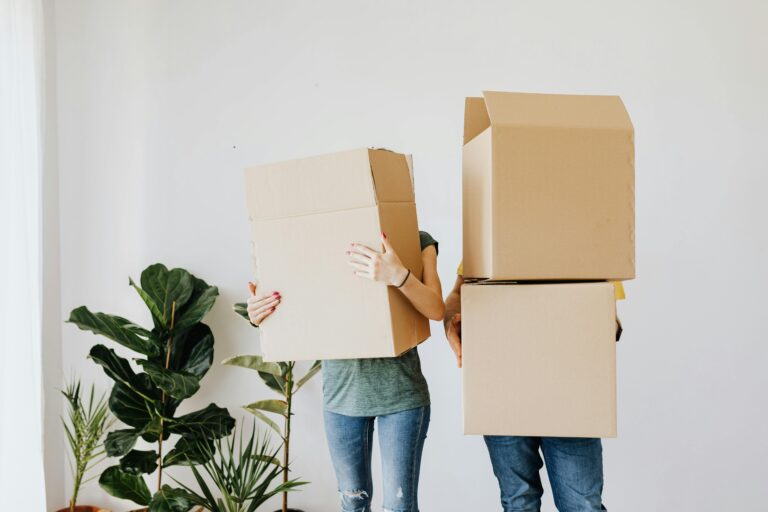
Purchasing a home is one of the most significant financial decisions you’ll make in your lifetime. Whether you’re a first-time buyer or a seasoned investor, the excitement of finding the perfect property can often overshadow the less-glamorous financial aspects of homeownership. While most people are aware of the basic costs—such as the down payment, mortgage, and closing costs—there are many hidden expenses that can catch you off guard. In this blog, we’ll dive into the unexpected costs of buying a home, so you can better prepare for your next purchase, whether it’s your first home or your next investment property. This is one of the most useful real estate tips you can use.
-
Home Inspection Costs and What You Might Miss
For first-time buyers, the home inspection is often seen as a simple step to ensure the home is in good condition. While it’s not a requirement for all buyers, it’s an essential part of the process for understanding the state of the property. The cost of a professional inspection typically ranges from $300 to $600, depending on the size and location of the home.
However, home inspections can’t uncover everything, and they may miss underlying issues, especially in older homes or those with unusual designs. Even after the inspection, you might face unexpected repair costs for things like the foundation, plumbing, or electrical systems—issues that could end up costing thousands of dollars to fix. It’s vital to budget for these contingencies, as home inspectors often can’t check for mold, pests, or other problems behind walls or underground pipes.
For long-time investors, these hidden repair costs might be familiar, but it’s easy to underestimate the extent of work required, especially when managing multiple properties. A property’s condition can also impact its rental potential, so factoring in potential repairs and upgrades is key to assessing the true value of an investment.
-
Closing Costs—More Than Just Fees
When you’re finalizing your home purchase, you’ll need to account for more than just the down payment. Closing costs can easily add 2-5% to the overall price of your home, depending on the state and the specifics of the deal. These costs include loan origination fees, title insurance, appraisal fees, attorney fees (in some states), and more.
For first-time buyers, these costs can come as a surprise, especially since many people focus on saving for the down payment alone. Closing costs can range anywhere from $5,000 to $15,000 for a $200,000 home. In some cases, these fees are negotiable, but be prepared to pay them upfront, as they’re not typically rolled into the mortgage loan.
For investors, closing costs can be even more substantial, especially when buying properties in markets with high taxes or insurance rates. It’s crucial to calculate these costs into your total investment strategy, as they can eat into your profit margins if not properly factored in.
-
Property Taxes—A Burden That Grows Over Time
Property taxes are an ongoing cost that will affect you long after you’ve bought your home. In the United States, property tax rates vary significantly from one state to another, and even from one county to the next. On average, homeowners pay about 1.1% of the property’s assessed value each year in taxes. So, for a $300,000 home, you might pay around $3,300 annually.
First-time buyers may overlook the impact of property taxes on their monthly budget. These taxes are typically rolled into your monthly mortgage payment, but as the value of your home increases, so does your tax bill. It’s important to check with local tax authorities to understand what tax rates apply to the area you’re looking at, as well as how they’ve changed historically.
For real estate investors, property taxes are a critical factor in profitability, especially when buying rental properties. Higher taxes can eat into rental income, reducing the overall return on investment. On the flip side, buying in a location with lower taxes can improve the overall financial picture for a rental property.
-
Homeowners Insurance—Beyond the Basic Coverage
Homeowners insurance is another often-overlooked cost. While it’s typically required by lenders, many buyers assume that a basic policy will suffice. However, the average cost of homeowners insurance in the United States is between $1,000 and $2,000 annually, with some areas experiencing much higher premiums. For example, homes in hurricane-prone areas like Florida or Texas may require additional coverage for flood and wind damage.
First-time buyers might also overlook the necessity of reviewing their coverage limits and policy terms. The cost of rebuilding or replacing personal belongings can be much higher than anticipated. It’s also essential to consider deductibles and the specific types of coverage that might be necessary for your property, especially if it’s located in an area prone to natural disasters.
For investors, insurance becomes even more complex. If you’re renting out properties, you’ll need landlord insurance, which covers liability, loss of rent, and damage to the property. You might also want to look into specific coverage for vacant properties or those with high-risk tenants.
-
Utility Bills—The Unseen Ongoing Expenses
Utility costs often go unnoticed during the home-buying process, but they can add up quickly. While you may have an idea of the average monthly utility costs for a home based on the square footage and location, there are many variables that affect your monthly bills. For instance, a poorly insulated home may lead to higher heating and cooling costs, especially in regions with extreme weather conditions.
It’s important to factor in utility bills for electricity, water, gas, and trash removal into your budget. If you’re a first-time buyer, be sure to inquire about the average utility costs from the previous owner or a neighbor. Additionally, energy-efficient upgrades, like new windows, appliances, or insulation, can help reduce long-term utility expenses.
For investors, utility bills can either be included in the rent or passed on to tenants. If utilities are part of the rental agreement, you’ll need to calculate these ongoing expenses into your investment’s profitability. Alternatively, if you charge tenants for utilities separately, you should ensure that the system is transparent and easy to manage.
-
Maintenance and Repair Costs—Planning for the Unexpected
Owning a home comes with a constant need for maintenance, which can add up over time. While many buyers are aware of the basics—like lawn care or replacing air filters—there are countless other hidden maintenance costs. These include the upkeep of appliances, plumbing issues, roof repairs, or pest control. As a rule of thumb, homeowners should expect to spend about 1% of their home’s value on maintenance and repairs each year.
For first-time homebuyers, this can be a shock, especially if they haven’t factored it into their monthly budget. Setting aside a maintenance fund, even if it’s just a small amount, can help ease the burden when repairs arise. It’s also important to have an emergency savings fund to cover unexpected expenses.
Real estate investors, especially those with older properties or large portfolios, need to account for higher maintenance costs. Regular maintenance is essential for preserving the value of your investment and keeping tenants satisfied. Larger properties or multi-unit buildings may also require more frequent repairs, which can affect the overall return on investment.
-
Homeowners Association (HOA) Fees—Extra Monthly Costs
Many homes, particularly in planned communities or condos, are subject to HOA fees. These fees can range from $100 to over $1,000 per month, depending on the location and amenities provided. HOA fees are used for maintaining common areas, providing security, and ensuring the community follows certain standards.
First-time buyers may not realize that these fees are not optional, and they can significantly affect their monthly budget. It’s essential to understand exactly what’s covered by the HOA fees and whether the rules and regulations are something you’re comfortable with.
For investors, HOA fees can impact rental income, as tenants may not be willing to pay a high rent if the fees are too steep. Moreover, it’s important to be aware of potential special assessments or increases in fees that can impact your overall financial planning.
-
Closing and Moving Costs—The Final Stretch
Even after closing on your home, there are a few final expenses to consider. The cost of moving can be substantial, especially if you’re relocating long distances. Hiring professional movers or renting a truck can add hundreds of dollars to your budget. Additionally, there may be costs associated with setting up services like internet, cable, and other utilities.
For first-time buyers, these “hidden” costs can sneak up on you, especially when you’re already stretched thin after the down payment and closing costs. Planning for the move, getting quotes from moving companies, and budgeting for service setup fees can help prevent these expenses from derailing your plans.
For real estate investors, moving costs are less of a concern, but it’s important to factor in the cost of getting properties ready for tenants. This can include cleaning, painting, or other minor repairs that ensure the property is in good condition before renting it out.
Buying a home is an exciting but often overwhelming process. Whether you’re a first-time buyer or an experienced investor, the hidden costs can quickly add up, creating financial strain if you’re not fully prepared. By understanding the full scope of expenses—beyond just the down payment and mortgage—you’ll be better equipped to manage your home purchase and protect your investment for years to come. Be sure to account for maintenance, taxes, insurance, HOA fees, and the unexpected repairs that come with homeownership. With proper planning and foresight, you can navigate the hidden costs and enjoy the long-term benefits of your new home or investment property.





